We are in the midst of a huge, citywide gentrification drive (or as it’s known to many, the Great Bricking of 2017), and we considered it our duty to explore the public renovations in more depth. Not only is this a local issue that many of us feel passionately about – it's also one that is profoundly important to the future of our city. Like so many things in Beijing, the matter is more complex than it first seems. You can read our full report below. To get a better idea of how the renovations are impacting everyday people, we also conducted a series of interviews with Beijingers were are directly impacted by the renovations.
READ MORE: We Talk to the Beijingers Being Impacted by Citywide Renovations
Driver Liu is trying to get from one corner of a hutong block to another. It’s dark, and the alleys just north of Dongsi Shitiao are a maze. But he knows their twists and turns like the back of his hand. The route should take three minutes by rickshaw.
But Liu isn’t expecting so much rubble. A pile of bricks and rubble blocks one of the xiang, a major artery running north to south through the neighborhood. He reroutes. Just moments later, he finds a bulldozer in another alley.
“Ah, can’t go this way,” he says gruffly, unfazed.
It’s Saturday night, around 11pm. The hutongs are silent, and there’s a gentle breeze. Construction work continues nonetheless.
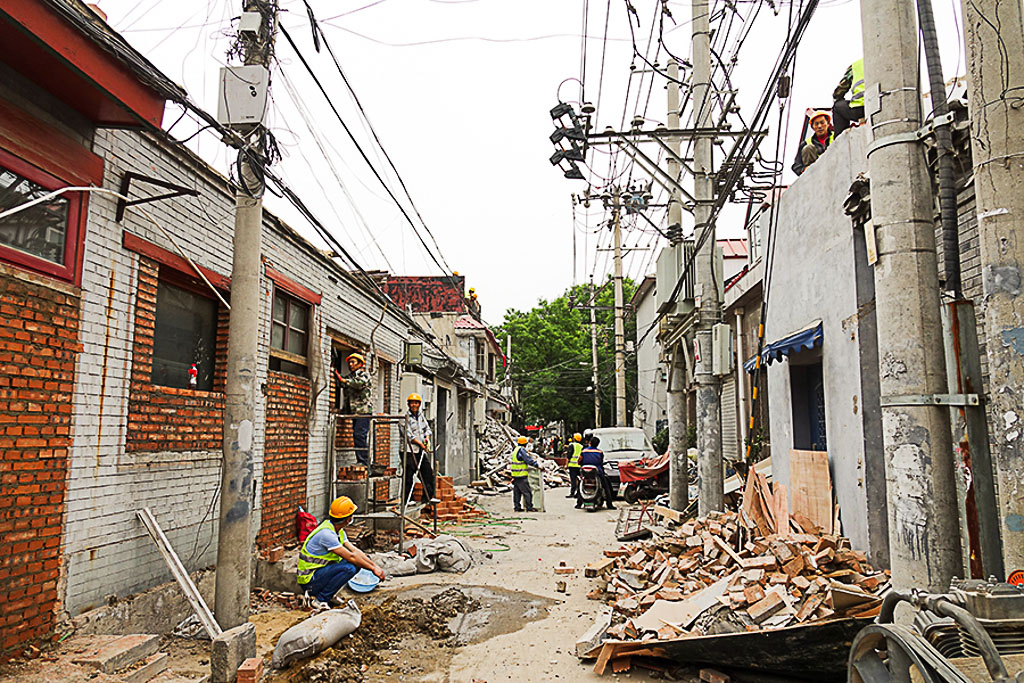
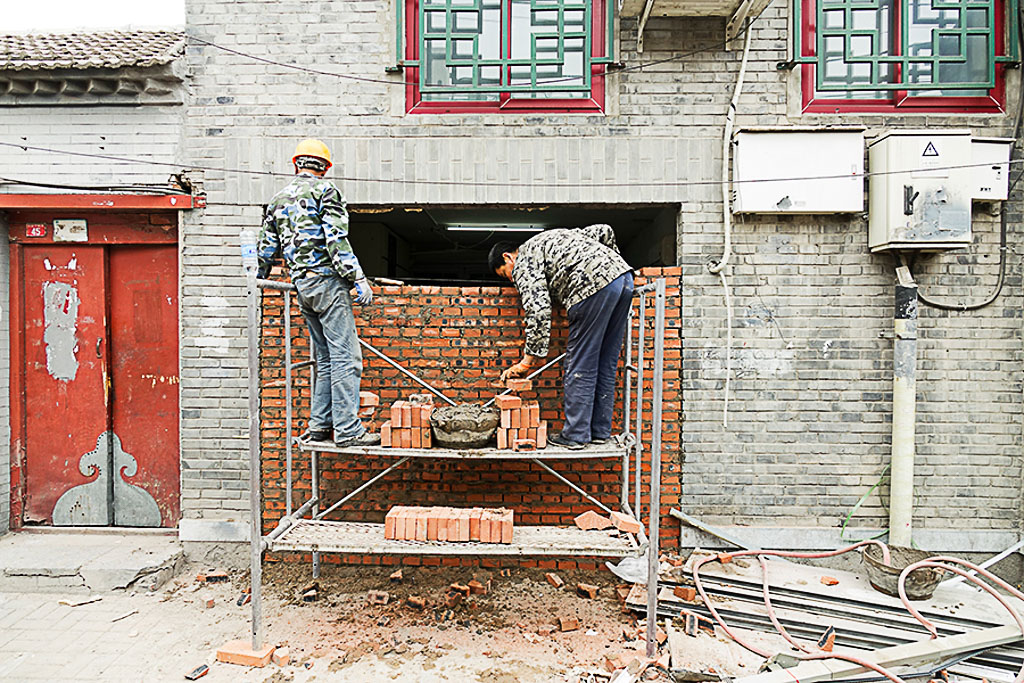
These hutongs look like a warzone, with debris from fallen buildings everywhere. A month later, though, they’re bricked over and painted gray. The streets are clean, and storefronts stripped of their entrances. Paper signs mark where doors used to be, with arrows telling customers how to enter from the back. Other shop owners have moved out.
“We got a slip on our front door stating the date they’d come and block the door,” a hair stylist tells us as she blow dries a client’s hair. We access her store through the back entrance in a narrow hutong alley. We ask if the construction has impacted her business, and all the women in the salon laugh in unison at our stupidity: “Yeah, of course.”
This neighborhood is merely one of many affected by a recent wave of public renovations across Beijing. From the hutongs to Sanlitun, small businesses are being knocked down or bricked over on a scale not seen in a decade. And the city plans to clean up nearly 1,700 alleys over the next few years – that’s almost two-thirds of Beijing’s existing hutongs.

“It’s definitely a crackdown – a campaign,” says Samuel Liang, a professor of urbanism at Utah Valley University and author of Remaking China's Great Cities. “Normally these happen ahead of a big international event [like the Olympics], but this time I don’t see that.”
But what exactly is Beijing cracking down on? According to a city government meeting on March 17, “urban diseases to be tackled” include 40 million sqm of illegal structures.
It seems that “tackled” often means “demolished.” For instance, Beijing’s expat community loudly decried shutdowns along Sanlitun’s “Dirty Bar Street,” as well as in the hutongs, where popular bars like Slow Boat and The Tiki Bungalow were both closed with little notice.
READ MORE: We Talk to the Beijingers Being Impacted by Citywide Renovations
Much of this seems to be a change in aesthetic, or as many are calling it, a “beautification campaign.” Think gentrification, with Chinese characteristics. In the hutongs, emphasis is placed on restoring courtyards to their original floorplans. That means one door per address, gray wall paint and small windows. 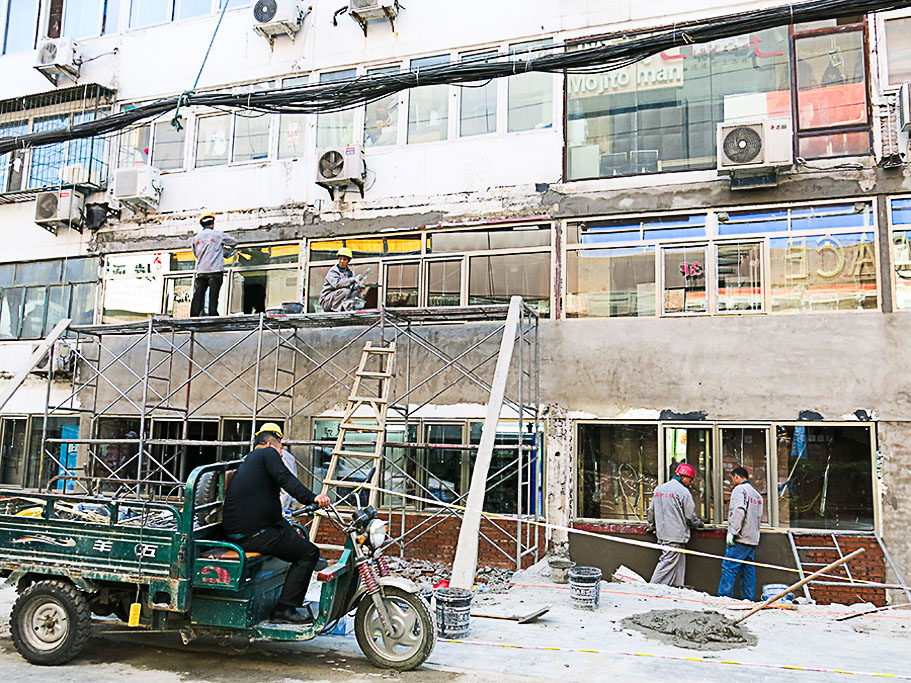
“Almost every year teams will come through and do something,” says Rosie Levine, program director at Beijing Cultural Heritage Protection Center. “They paint everything gray, or put up some tiles, or go through and dig up the ground and repave it. Surface-level changes. It’s been happening quite regularly since around the time of the Olympics.”
Renovations in Beijing are nothing new, but this year they are more visible, and wider spread. They have resulted in the closure of over 400 ‘rental compounds,’ and over 300 ‘illegal enterprises,’ according to Chinese state media.
“China’s urbanization is still an ongoing process,” says Li Pengfei, an assistant professor of urban studies at Queens College, City University of New York. “The current round of demolitions is the third wave.”
According to Li, the first phase of these citywide renovations started in 1994, when many urban dwellers were forced to move to suburban districts like Changping, Shunyi and Daxing. The second wave happened in the mid-2000s, when, he says, “the whole city of Beijing was a construction zone for the 2008 Summer Olympics.” According to Reuters, approximately 1,000 courtyard homes were either renovated or destroyed during this time, causing admirers of Old Beijing to panic.
Many speculate this recent round has to do with the ambitions of Cai Qi, Beijing’s new mayor, who was quoted saying city authorities must “dare to play hardball” when renovating their districts.
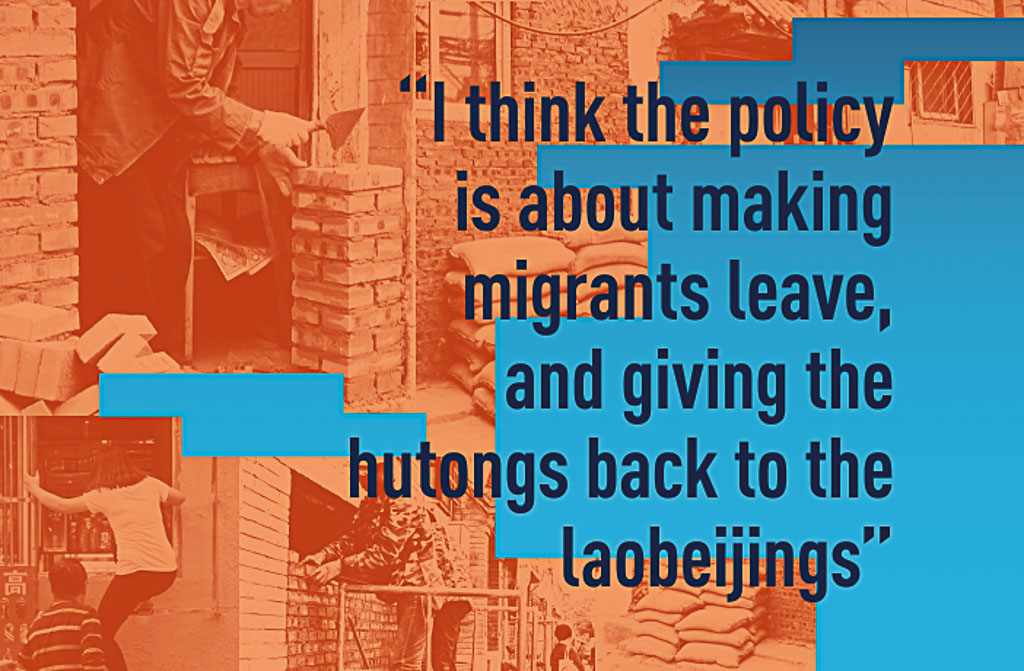
But there are several reasons why Beijing – and the greater region – would want to crack down on small businesses in the city center. Local authorities have long tried to push the city’s population outward – to suburbs and the greater Jing-Jin-Ji [Beijing-Tianjin-Hebei] region. The city government plans on capping its population at 23 million – its current population is 22 million – and then relying on the suburbs to absorb the city’s growth. In 2015, Beijing began this process by announcing the relocation of municipal government facilities to the eastern district of Tongzhou, and earlier this year, the government announced plans to turn three rural Hebei villages southwest of the capital into the Xiongan New Area – a major economic hub set to host a Special Economic Zone like Shenzhen’s.
Economic factors may also be at play. According to the Financial Times, small shops and businesses generate 35 percent of the city’s revenue, but only 7.5 percent of the tax.
“They don’t make tax off the small people,” says Professor Liang. “[The renovations] will make the city more expensive, and that’s good for the [local] government to get more revenue.”

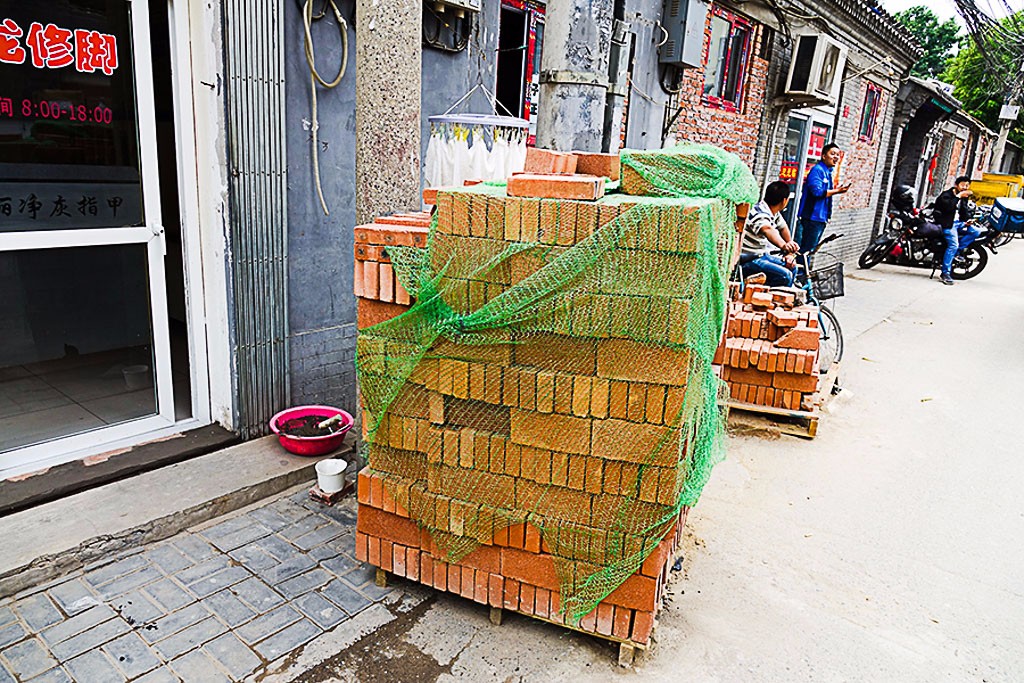
Replacing Beijing’s vast variety of small, independent shops and businesses with larger chains could fix that. Last year, on average, over 60 restaurants were closed in Beijing per day – and yet the city’s food and beverage revenue increased by 4 percent, according to official data.
But to locals on the ground, there’s another explanation.
“These illegal structures often provide cheap housing for migrant workers,” says Liang. “So by taking them down, the [local government] can reduce the population.”
A longtime Dongsi Shisantiao resident, who did not want to be named, believes this as well.
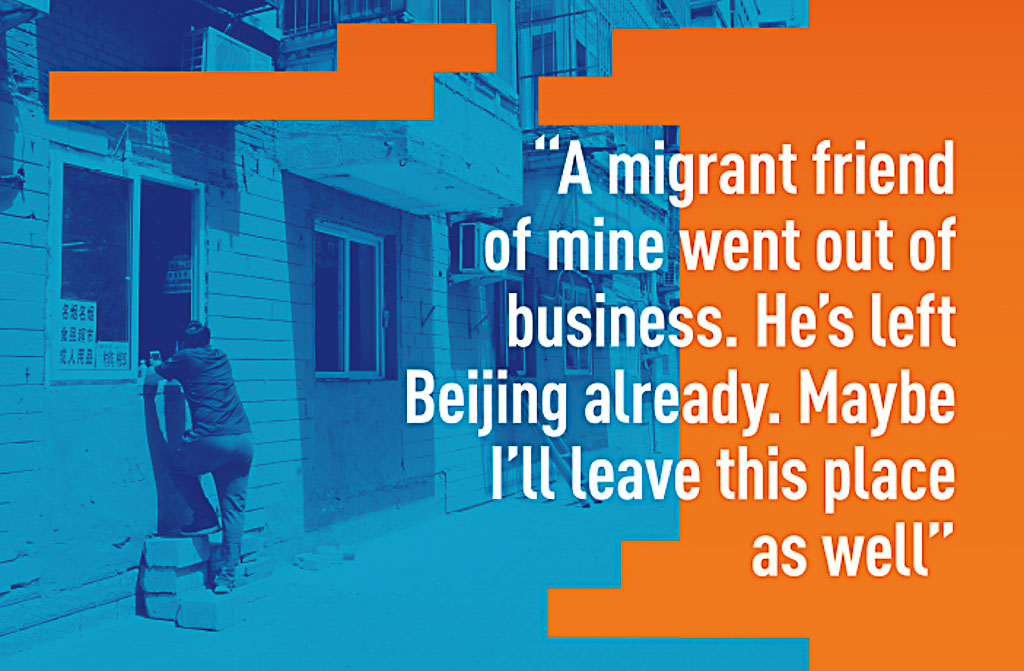
“I think the policy is about making migrants leave, and giving the hutongs back to the Laobeijings,” she says (see p. 46 for full interview). “Over the years, people from outside Beijing have come to the hutongs to set up businesses, making holes in the walls for doors. […] Since the migrants came, it’s become a lot messier.”
Many laobeijings are happy about the renovations. And soon, they’ll be able to help by notifying authorities about illegal construction. The city government is collaborating with Baidu to develop a service for the public to report unlicensed work via their phones.

According to city data, the number of migrants in Beijing grew fivefold over the past two decades, topping out at 8.2 million in 2015. Since then, Beijing has pushed to curb their growth.
Xu Xiaoxian is one such migrant. The Jiangsu native came to Beijing 10 years ago, and now runs a small shop, which was recently bricked over (see full interview, right).
“A migrant friend of mine went out of business because of the renovations. He’s left Beijing already,” Xu tells us. “So maybe in a month or two, I’ll leave this place as well, because they’re not going to let me keep my license.”
But while the closing of migrants‘ businesses may make the hutongs look cleaner, it’s not clear if these hutong ‘restorations’ have historical value.
“In many ways, I’m behind the concept,” says Levine. “Taking down illegal structures that make quality of life harder in the hutongs, or are safety hazards – of course that’s a good thing. But if it’s really to preserve the cultural integrity of the structure and the community, I would like to see more traditional restoration happening in the hutongs, in the courtyards themselves. Or improvements to basic quality-of-life issues – plumbing, heating, infrastructure.”
Many have lamented the renovations as a loss of Old Beijing. Professor Li, for instance, says: “China’s officials believe that modernity means more skyscrapers and more air-conditioned shopping malls. This conception of modernity is laughable.”

But others are more optimistic.
“My prediction is that China will always be a mix,” says Professor Liang. “Maybe the modern shopping malls can upscale or increase, but my guess is that they won’t be able to fully eliminate these street vendors.
“What’s amazing about cities like Shanghai and Beijing is that you can find people from all walks of life. I think that’s the great strength and charm of Chinese cities. I think in 10 years the [city] will be more gentrified, but you’ll still be able to see that mix. Look at Hong Kong, where there has been a [gentrification] campaign for the last 50 years. It’s a very modern city, but you can still see street stalls and butcher shops – very traditional.”
READ MORE: We Talk to the Beijingers Being Impacted by Citywide Renovations
Additional reporting by Oscar Holland & Dominique Wong, graphics by Iris Wang, photos by Victor Liu
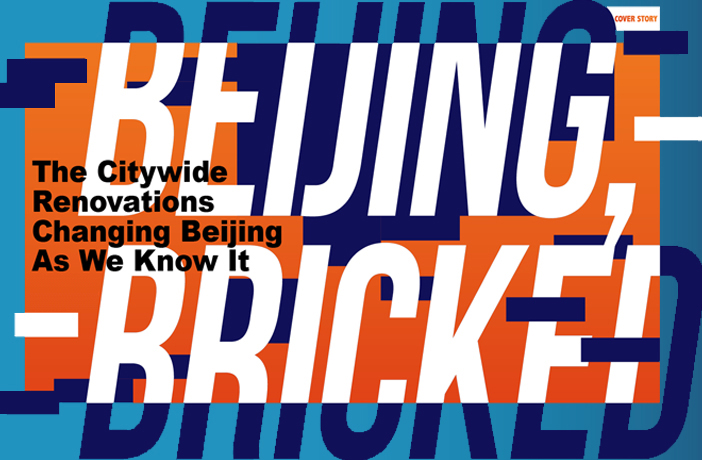




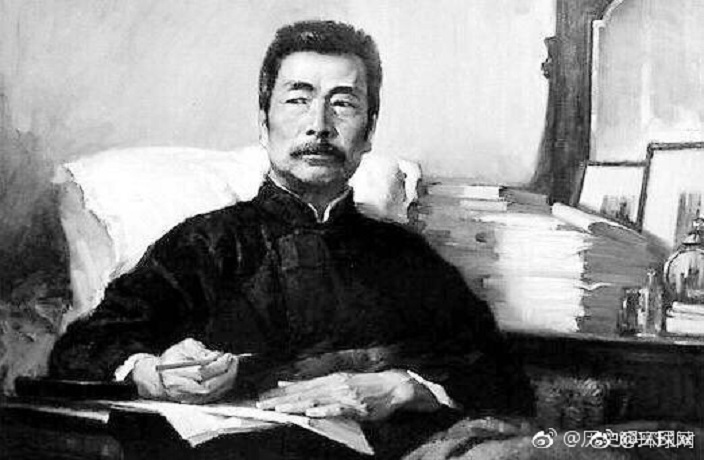
















0 User Comments